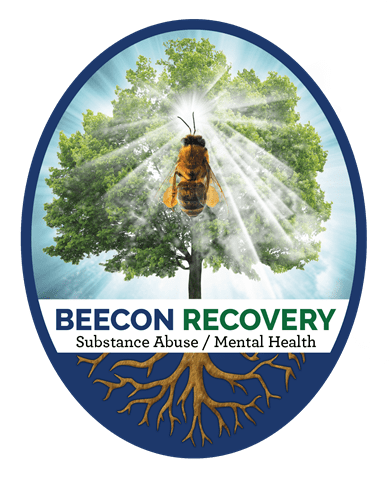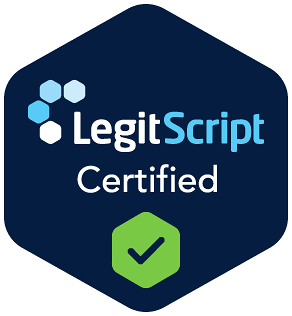Understanding Treatment Levels
PHP vs. IOP: Key Differences
When considering addiction recovery and mental health treatment, it’s essential to understand the differences between Partial Hospitalization Programs (PHP) and Intensive Outpatient Programs (IOP). These two levels of care vary in intensity, structure, and the amount of time spent in treatment each week.
Partial Hospitalization Programs (PHP):
- PHPs involve therapy and treatments five days a week for five or six hours each day (Ohio State University Wexner Medical Center).
- PHPs provide a highly structured environment with a strong emphasis on medical and psychiatric care, including medication management, individual therapy, group therapy, and other therapeutic activities.
- PHPs are ranked as a 2.5 level of care on the ASAM continuum, falling near the middle of the care continuum between inpatient and traditional outpatient treatment (American Addiction Centers).
Intensive Outpatient Programs (IOP):
- IOPs require treatments two to three hours a day, two to three times a week, making it less intense than PHP but more intense than standard outpatient care.
- IOPs offer a structured but more flexible environment that includes individual therapy, group therapy, and skill-building sessions, but with less medical oversight than PHPs (Charlie Health).
- IOPs are ranked as a 2.1 level of care on the ASAM continuum (American Addiction Centers).
| Program Type | Frequency | Duration per Session | ASAM Level of Care | Medical Oversight |
|---|---|---|---|---|
| PHP | 5 days/week | 5-6 hours/day | 2.5 | High |
| IOP | 2-3 days/week | 2-3 hours/day | 2.1 | Moderate |
For more information on when a PHP might be the right choice, visit our article on when is a partial hospitalization program (php) the right choice?.
ASAM Continuum Levels
The American Society of Addiction Medicine (ASAM) provides a continuum of care levels to guide the treatment of substance use disorders. These levels help determine the appropriate intensity and type of care needed for individuals based on their specific conditions and needs.
- Level 0.5: Early Intervention
- Level 1: Outpatient Services
- Level 2.1: Intensive Outpatient Services (IOP)
- Level 2.5: Partial Hospitalization Services (PHP)
- Level 3: Residential/Inpatient Services
- Level 4: Medically Managed Intensive Inpatient Services
Understanding these levels is crucial for selecting the right treatment program. PHPs and IOPs fall within the middle range of the continuum, offering structured support without the need for full-time residential care. For more details on how clinical assessments determine your level of care, visit our article on how clinical assessments determine your level of care.
By understanding the differences between PHP and IOP, as well as the ASAM continuum levels, individuals can make informed decisions about their treatment options. For those transitioning from inpatient to outpatient care, our article on transitioning from inpatient to outpatient: what you need to know provides valuable insights.
Partial Hospitalization Programs (PHP)
Structure and Intensity
Partial Hospitalization Programs (PHP) offer a structured and intensive level of care for individuals dealing with addiction and mental health issues. PHP typically involves therapy and treatments five days a week for five or six hours each day (Ohio State University Wexner Medical Center). This level of care is more intensive than Intensive Outpatient Programs (IOP) but less so than inpatient treatment. PHPs provide a comprehensive approach that includes individual therapy, group therapy, and family counseling.
| Program Type | Frequency | Duration per Session |
|---|---|---|
| PHP | 5 days/week | 5-6 hours/day |
| IOP | 2-3 days/week | 2-3 hours/day |
Medical and Psychiatric Care
PHPs offer more direct supervision and higher medical oversight compared to IOPs. Patients in PHPs are closely monitored by a multidisciplinary team, including psychiatrists and nurses, who are available to address immediate medical or psychiatric needs and make necessary medication adjustments (Charlie Health). This level of care ensures that any medical or psychiatric issues are promptly addressed, providing a safe and supportive environment for recovery.
Conditions Treated
PHPs are designed to treat a variety of mental health and substance use disorders. Common conditions treated include:
- Depression
- Anxiety disorders
- Bipolar disorder
- Substance use disorders
- Dual diagnosis cases (co-occurring mental health and substance use disorders)
These programs are tailored to meet the specific needs of each individual, ensuring a personalized treatment approach. For more information on when a PHP might be the right choice, visit our article on when is a partial hospitalization program (php) the right choice?.
Understanding the structure, intensity, and medical oversight of PHPs can help individuals make informed decisions about their treatment options. For those transitioning from inpatient care, PHPs offer a step-down level of care that provides continued support and supervision. Learn more about the benefits of stepping down from PHP to IOP in our article on benefits of stepping down from php to iop.
Intensive Outpatient Programs (IOP)
Program Overview
Intensive Outpatient Programs (IOPs) offer a structured and supportive environment for individuals seeking addiction recovery and mental health treatment. IOPs provide a higher level of intensity than standard outpatient programs but a lower level than inpatient rehab. Participants are required to attend treatment at least 9 hours per week, often delivered in 3, 3-hour sessions (American Addiction Centers). Treatment can take place in various settings such as hospitals, rehab facilities, community centers, and clinics.
| Program Type | Weekly Hours | Living Arrangement |
|---|---|---|
| Inpatient Rehab | 24/7 | Facility |
| IOP | 9+ | Home/Sober Living |
| Standard Outpatient | < 9 | Home |
Effectiveness and Outcomes
Studies have consistently reported significant reductions in problem severity and increases in days abstinent at follow-up for participants receiving intensive outpatient or day treatment services compared to those in inpatient or residential care. The effectiveness of IOPs has been found to be equivalent to inpatient and residential treatments.
Outcomes reflecting alcohol and drug use at follow-up show reductions in substance use and increases in abstinence, with no significant differences between inpatient and intensive outpatient service settings. IOP services have at least two advantages: increased duration of treatment and the opportunity to engage and treat consumers while they remain in their home environments.
Suitable Candidates
IOPs can function as an entry point into the continuum of care, a beneficial step-down form of treatment for individuals who have completed a residential or inpatient program, or a step-up program for people who need a higher intensity level of care. Individuals who might be good candidates for IOPs include those who do not require medical detoxification or 24-hour supervision (American Addiction Centers).
Suitable candidates for IOPs are those who:
- Do not need medical detoxification
- Do not require 24-hour supervision
- Can manage their responsibilities at home, school, or work while in treatment
- Have a stable and supportive home environment
For more information on transitioning between different levels of care, visit our article on transitioning from inpatient to outpatient: what you need to know.
By understanding the structure, effectiveness, and suitability of IOPs, individuals can make informed decisions about their treatment options. For further details on the benefits of stepping down from PHP to IOP, check out our article on the benefits of stepping down from php to iop.
Cost Considerations
When considering addiction recovery and mental health treatment options, understanding the cost implications of different programs is crucial. Here, we compare the costs of Partial Hospitalization Programs (PHP) and Intensive Outpatient Programs (IOP) and explore the factors influencing these costs.
Cost Comparison: PHP vs. IOP
PHPs provide a slightly lower intensity and cost compared to inpatient treatment, but a greater intensity than traditional outpatient care and IOPs (American Addiction Centers). The cost difference between PHPs and IOPs varies based on factors like location, program specifics, treatment duration, and services provided. Generally, PHPs are more expensive due to their intensive daily or near-daily sessions, sometimes requiring on-site medical supervision. In contrast, IOPs provide structured therapy with fewer weekly hours, resulting in lower costs due to reduced staff and facility needs.
| Program Type | Average Cost per Month |
|---|---|
| Partial Hospitalization Program (PHP) | $7,000 – $20,000 |
| Intensive Outpatient Program (IOP) | $3,000 – $10,000 |
Factors Influencing Cost
Several factors influence the cost of PHPs and IOPs:
- Location: Treatment costs can vary significantly based on geographic location. Urban areas with a higher cost of living typically have higher treatment costs.
- Program Specifics: The specific services and amenities offered by the program can impact the overall cost. Programs with more comprehensive services, such as on-site medical care, specialized therapies, and holistic treatments, may be more expensive.
- Treatment Duration: The length of the treatment program plays a significant role in determining the cost. Longer programs generally incur higher costs.
- Staff and Facility Needs: PHPs often require more staff and resources due to their intensive nature, leading to higher costs. IOPs, with fewer weekly hours and less intensive supervision, tend to be more cost-effective.
- Insurance Coverage: Insurance coverage can significantly affect out-of-pocket costs. Understanding your insurance benefits and coverage for PHP and IOP services is essential. For more information, visit our article on understanding insurance coverage for PHP and IOP services.
Choosing the right program involves considering both the cost and the specific needs of the individual. For more insights on selecting the appropriate treatment level, explore our articles on when is a partial hospitalization program (php) the right choice? and benefits of stepping down from php to iop. Additionally, understanding the role of clinical assessments in determining the level of care can help in making an informed decision.
Research and Evidence
Effectiveness of IOPs
Intensive Outpatient Programs (IOPs) are a critical component of the continuum of care for individuals dealing with alcohol and drug use disorders. Research indicates that IOPs are as effective as inpatient treatment for most individuals seeking care. Public and commercial health plans are encouraged to consider IOP treatment as a covered health benefit to enhance the quality and effectiveness of care.
The level of evidence supporting the effectiveness of IOPs is high, based on the quality of trials, diversity of settings, and consistency of outcomes. Multiple randomized trials and naturalistic analyses have compared IOPs with inpatient or residential care, showing comparable outcomes with substantial reductions in alcohol and drug use between baseline and follow-up (NCBI).
| Treatment Type | Reduction in Substance Use | Increase in Days Abstinent |
|---|---|---|
| IOP | Significant | Significant |
| Inpatient | Significant | Significant |
| Residential | Significant | Significant |
Studies consistently report significant reductions in problem severity and increases in days abstinent at follow-up for participants receiving intensive outpatient or day treatment services compared to those in inpatient or residential care. The effectiveness of IOPs has been found to be equivalent to inpatient and residential treatments (NCBI).
Literature Review Findings
A 2015 literature review found that IOPs significantly reduce alcohol and drug use and improve mental health among individuals struggling with substance use disorder (SUD). Similarly, a review of Partial Hospitalization Programs (PHPs) found that these programs are a cost-effective option for many patients needing more intensive care, especially in improving social functioning without entirely disrupting a patient’s environment.
Overall, outcomes reflecting alcohol and drug use at follow-up show reductions in substance use and increases in abstinence, with no significant differences between inpatient and intensive outpatient service settings. IOP services have at least two advantages: increased duration of treatment and the opportunity to engage and treat consumers while they remain in their home environments (NCBI).
For those considering the best treatment options, understanding the differences between PHP, IOP, and OPT is crucial. Our article on what to expect during each phase of your treatment journey provides further insights into the treatment process. Additionally, exploring the benefits of stepping down from PHP to IOP can help in making informed decisions about the most suitable level of care.
By examining the research and evidence, it becomes clear that IOPs offer a viable and effective treatment option for individuals seeking recovery from substance use disorders. For more information on how clinical assessments determine your level of care, visit our article on how clinical assessments determine your level of care.
Choosing the Right Program
Selecting the appropriate treatment program is crucial for successful recovery. Understanding the differences between PHP, IOP, and OPT can help individuals make informed decisions about their care.
Factors to Consider
When choosing between a Partial Hospitalization Program (PHP), an Intensive Outpatient Program (IOP), and an Outpatient Program (OPT), several factors should be taken into account:
- Severity of Condition: PHPs are designed for individuals who need more support than traditional outpatient therapy but do not require 24-hour supervision. IOPs are suitable for those who need structured care but can manage their condition outside a hospital setting. OPTs are ideal for individuals who need minimal support and can maintain their daily responsibilities.
- Treatment Needs: PHPs offer at least 25 hours of weekly treatment, making them suitable for individuals with severe conditions such as dual diagnosis cases. IOPs provide structured support for substance use disorders and mental health conditions like depression and anxiety. OPTs offer flexible support for those in the maintenance phase of recovery.
- Daily Commitments: PHPs require attendance five to seven days a week for four to six hours per day. IOPs offer more flexibility, allowing individuals to attend sessions while managing daily responsibilities. OPTs provide the most flexibility, with fewer sessions per week.
- Support System: Consider the availability of a strong support system at home. PHPs provide intensive support during the day, while IOPs and OPTs require individuals to have a stable home environment.
- Cost and Insurance: Evaluate the cost of each program and check insurance coverage. PHPs are generally more expensive due to the intensity of care. For more information, visit our article on understanding insurance coverage for PHP and IOP services.
Personalized Treatment Approach
At Beecon Recovery, we believe in a personalized treatment approach tailored to each individual’s unique needs. Our clinical assessments help determine the appropriate level of care, ensuring that each person receives the support they need at the right time. Learn more about how clinical assessments determine your level of care.
- Comprehensive Assessment: Our team conducts thorough assessments to understand the severity of the condition, treatment history, and individual preferences. This helps us create a customized treatment plan.
- Integrated Care: We offer a continuum of care, allowing individuals to transition smoothly between different levels of treatment. For example, stepping down from PHP to IOP can provide ongoing support while promoting independence.
- Holistic Approach: Our programs address both mental health and substance use disorders, providing comprehensive care for dual diagnosis cases. We focus on treating the whole person, not just the symptoms.
- Ongoing Support: We provide continuous support through case management, helping individuals navigate multiple levels of care. This ensures that they receive the right support at each stage of their recovery journey.
- Flexibility: Our programs are designed to accommodate individual schedules and commitments. Whether you need the intensive support of a PHP, the structured care of an IOP, or the flexibility of an OPT, we have options to suit your needs.
Choosing the right program is a critical step in the recovery process. By considering the factors mentioned above and opting for a personalized treatment approach, individuals can achieve lasting recovery and improved mental health. For more information on what to expect during each phase of your treatment journey, visit our article on what to expect during each phase of your treatment journey.






